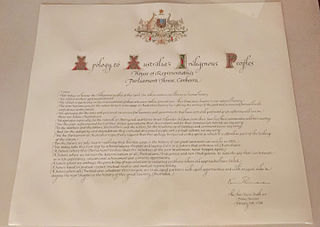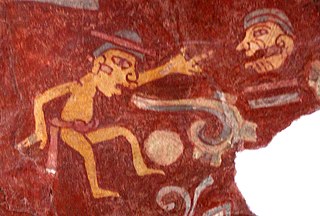 W
WAn apology is an expression of regret or remorse for actions, while apologizing is the act of expressing regret or remorse. In informal situations, it may be called saying sorry. The goal of apologizing is generally forgiveness, reconciliation and restoration of the relationship between the people involved in a dispute.
 W
WApplause is primarily a form of ovation or praise expressed by the act of clapping, or striking the palms of the hands together, in order to create noise. Audiences usually applaud after a performance, such as a musical concert, speech, or play, as a sign of enjoyment and approval.
 W
W"Chew the fat" or "chew the rag" are English expressions for gossiping or making friendly small talk, or a long and informal conversation with someone.
 W
WA clap is the percussive sound made by striking together two flat surfaces, as in the body parts of humans or animals. Humans clap with the palms of their hands, often quickly and repeatedly to express appreciation or approval, but also in rhythm as a form of body percussion to match the sounds in music, dance, chants, hand games, and clapping games.
 W
WA committee or commission is a body of one or more persons subordinate to an assembly. A committee is not itself considered to be a form of assembly. Usually, the assembly sends matters into a committee as a way to explore them more fully than would be possible if the assembly itself were considering them. Committees may have different functions and their types of work differ depending on the type of the organization and its needs.
 W
WHuman–computer interaction (HCI) is research in the design and the use of computer technology, which focuses on the interfaces between people (users) and computers. HCI researchers observe the ways humans interact with computers and design technologies that allow humans to interact with computers in novel ways.
 W
WA council circle is a distinctive feature at the center of some tribal communities in North America. The historical function of the council circles is debated. Some suggest that the talking circles are ceremonial, and others support a hypothesis that they were places for political discussion that suggest aboriginal democracy.
 W
WGatekeeping is the process through which information is filtered for dissemination, whether for publication, broadcasting, the internet, or some other mode of communication. The academic theory of gatekeeping may be found in multiple fields of study, including communication studies, journalism, political science, and sociology. Gatekeeping originally focused on the mass media with its few-to-many dynamic. Currently, the gatekeeping theory also addresses face-to-face communication and the many-to-many dynamic inherent on the Internet. Social psychologist Kurt Lewin first instituted Gatekeeping theory in 1943. Gatekeeping occurs at all levels of the media structure—from a reporter deciding which sources are presented in a headline story to editors choosing which stories are printed or covered. Including, but not limited to, media outlet owners and advertisers.
 W
WIn critical theory, sociology, and psychoanalysis, the gaze, in the philosophical and figurative sense, is an individual's awareness and perception of other individuals, other groups, or oneself. The concept and the social applications of the gaze have been defined and explained by existentialist and phenomenologist philosophers. Jean-Paul Sartre described the gaze in Being and Nothingness (1943). Michel Foucault, in Discipline and Punish: The Birth of the Prison (1975), developed the concept of the gaze to illustrate the dynamics of socio-political power relations and the social dynamics of society's mechanisms of discipline. Jacques Derrida, in The Animal that Therefore I Am (1997), elaborated upon the inter-species relations that exist among human beings and other animals, which are established by way of the gaze.
 W
WThe Global Language Monitor (GLM) is a company based in Austin, Texas that collectively documents, analyzes, and tracks trends in language usage worldwide, with a particular emphasis upon the English language. It is particularly known for its Word of the Year, political analysis, college and university rankings, High Tech buzzwords, and media analytics.
 W
WGossip is idle talk or rumour, especially about the personal or private affairs of others; the act is also known as dishing or tattling.
 W
WA heckler is a person who harasses and tries to disconcert others with questions, challenges, or gibes. Hecklers are often known to shout encouraging comments at a performance or event, or to interrupt set-piece speeches, with the intent of disturbing performers and/or participants.
 W
WHolding hands is a form of physical intimacy involving two or more people. It may or may not be romantic.
 W
WA howler is a glaring blunder, clumsy mistake or embarrassing misjudgment, typically one which evokes laughter, though not always.
 W
WInterpersonal communication is an exchange of information between two or more people. It is also an area of research that seeks to understand how humans use verbal and nonverbal cues to accomplish a number of personal and relational goals.
 W
WThe Jewish-Palestinian Living Room Dialogue Group is a non-violent conflict resolution group established in 1992 in San Mateo, California. Its first meeting was held in a local neighborhood residence. As of September 2019, the group remained active and continued to meet monthly in members' homes. The one-to-one, face-to-face method of conflict resolution, modeled by this dialogue group, was increasingly looked to globally by educators, researchers, journalists, activists, trainers, and strategists including the U.S. Department of State, which distributes the dialogue group's instructive films in Africa.
 W
WA language is a structured system of communication used by humans, based on speech and gesture, sign, or often writing. The structure of language is its grammar and the free components are its vocabulary. Many languages, including the most widely-spoken ones, have writing systems that enable sounds or signs to be recorded for later reactivation. Human language is unique among known systems of animal communication in that it is not dependent on a single mode of transmission, it is highly variable between cultures and across time, and affords a much wider range of expression than other systems. It has the properties of productivity and displacement, and relies on social convention and learning.
 W
WThe Lombard effect or Lombard reflex is the involuntary tendency of speakers to increase their vocal effort when speaking in loud noise to enhance the audibility of their voice. This change includes not only loudness but also other acoustic features such as pitch, rate, and duration of syllables. This compensation effect maintains the auditory signal-to-noise ratio of the speaker's spoken words.
 W
WManual communication systems use articulation of the hands to mediate a message between persons. Being expressed manually, they are received visually and sometimes tactually. When it is the primary form of communication, it may be enhanced by body language and facial expressions.
 W
WA message stick is a public form of graphic communication devised by Aboriginal Australians. The objects were carried by messengers over long distances and were used for reinforcing a verbal message. Although styles vary, they are generally oblong lengths of wood with motifs engraved on all sides. They have traditionally been used across continental Australia, to convey messages between Aboriginal nations, clans and language groups and even within clans. In the 1880s, they became objects of anthropological study, but there has been little research on them published since then. Message sticks are non-restricted since they were intended to be seen by others, often from a distance. They are nonetheless frequently mistaken for tjurungas.
 W
WMiscommunication is defined as a failure to communicate adequately and properly. It is one of the types of Communication barrier.
 W
WModels of communication are conceptual models used to explain the human communication process. The first major model for communication was developed in 1948 by Claude Shannon and published with an introduction by Warren Weaver for Bell Laboratories. Following the basic concept, communication is the process of sending and receiving messages or transferring information from one part (sender) to another (receiver).
 W
WNamaste, sometimes spoken as namaskar and namaskaram, is a Hindu customary, non-contact form of respectfully greeting and honoring the opposite person or group, used at any time of day. Today, it is found on the Indian subcontinent, Southeast Asia, among the Indian diaspora and elswhere. The gesture is widely used as a greeting in the parts of Southeast Asia where Indian religions are strong. Namaste is usually spoken with a slight bow and hands pressed together, palms touching and fingers pointing upwards, thumbs close to the chest. This gesture is called añjali mudrā; the standing posture incorporating it is pranamasana.
 W
WA question is an utterance which typically functions as a request for information, which is expected to be provided in the form of an answer. Questions can thus be understood as a kind of illocutionary act in the field of pragmatics or as special kinds of propositions in frameworks of formal semantics such as alternative semantics or inquisitive semantics. Questions are often conflated with interrogatives, which are the grammatical forms typically used to achieve them. Rhetorical questions, for example, are interrogative in form but may not be considered true questions as they are not expected to be answered.
 W
WRelevance theory is a framework for understanding the interpretation of utterances. It was first proposed by Dan Sperber and Deirdre Wilson, and is used within cognitive linguistics and pragmatics. The theory was originally inspired by the work of Paul Grice and developed out of his ideas, but has since become a pragmatic framework in its own right. The seminal book, Relevance, was first published in 1986 and revised in 1995.
 W
WA rumor, or rumour, is "a tall tale of explanations of events circulating from person to person and pertaining to an object, event, or issue in public concern."
 W
WA shrug is a gesture performed by raising both shoulders, and is a representation of an individual either being indifferent about something or not knowing an answer to a question. A shrug is an emblem, meaning that it integrates the vocabulary of only certain cultures and may be used in place of words. It can also be used when simply ignoring a question. It may be accentuated with raised eyebrows, a turned-down mouth, an exaggerated frown, a tilted head, and raised palms. It is very common in Western culture—rather than saying "I don't know", one may simply perform a shrug. In the English-speaking world it may be accompanied by a three-syllable grunt or hummed mumble mimicking the intonation of "I don't know".
 W
WSocial constructionism is a theory of knowledge in sociology and communication theory that examines the development of jointly-constructed understandings of the world that form the basis for shared assumptions about reality. The theory centers on the notion that meanings are developed in coordination with others rather than separately within each individual. It has often been characterised as neo-Marxian or also as a neo-Kantian theory, in that social constructionism replaces the transcendental subject with a concept of society that is at the same time descriptive and normative.
 W
WA social skill is any competence facilitating interaction and communication with others where social rules and relations are created, communicated, and changed in verbal and nonverbal ways. The process of learning these skills is called socialization. Lack of such skills can cause social awkwardness.
 W
WA standing ovation is a form of applause where members of a seated audience stand up while applauding after extraordinary performances of particularly high acclaim. In Ancient Rome returning military commanders whose victories did not quite meet the requirements of a triumph but which were still praiseworthy were celebrated with an ovation instead, from the Latin ovo, "I rejoice". The word's use in English to refer to sustained applause dates from at least 1831.
 W
WSubvocal recognition (SVR) is the process of taking subvocalization and converting the detected results to a digital output, aural or text-based.
 W
WSubvocalization, or silent speech, is the internal speech typically made when reading; it provides the sound of the word as it is read. This is a natural process when reading, and it helps the mind to access meanings to comprehend and remember what is read, potentially reducing cognitive load.
 W
WTadoma is a method of communication used by deafblind individuals, in which the deafblind person places their little finger on the speaker's lips and their fingers along the jawline. The middle three fingers often fall along the speaker's cheeks with the little finger picking up the vibrations of the speaker's throat. It is sometimes referred to as tactile lipreading, as the deafblind person feels the movement of the lips, as well as vibrations of the vocal cords, puffing of the cheeks and the warm air produced by nasal sounds such as 'N' and 'M'. There are variations in the hand positioning, and it is a method sometimes used by people to support their remaining hearing.
 W
WTouching heads is a uniquely human emotional expression that does not occur in nonhuman primates. All races, age groups and both sexes of humankind interpret this behavior as an expression of positive emotions, such as love—including brotherly love, friendship etc.
 W
WIn the industrial design field of human–computer interaction, a user interface (UI) is the space where interactions between humans and machines occur. The goal of this interaction is to allow effective operation and control of the machine from the human end, while the machine simultaneously feeds back information that aids the operators' decision-making process. Examples of this broad concept of user interfaces include the interactive aspects of computer operating systems, hand tools, heavy machinery operator controls, and process controls. The design considerations applicable when creating user interfaces are related to, or involve such disciplines as, ergonomics and psychology.
 W
WWriting is a medium of human communication that involves the representation of a language with written symbols. Writing systems are not themselves human languages ; they are means of rendering a language into a form that can be reconstructed by other humans separated by time and/or space. While not all languages use a writing system, those with systems of inscriptions can complement and extend capacities of spoken language by enabling the creation of durable forms of speech that can be transmitted across space and stored over time. It has also been observed that the activity of writing itself can have knowledge-transforming effects, since it allows humans to externalize their thinking in forms that are easier to reflect on, elaborate, reconsider, and revise. Writing relies on many of the same semantic structures as the speech it represents, such as lexicon and syntax, with the added dependency of a system of symbols to represent that language's phonology and morphology. The result of the activity of writing is called a text, and the interpreter or activator of this text is called a reader.